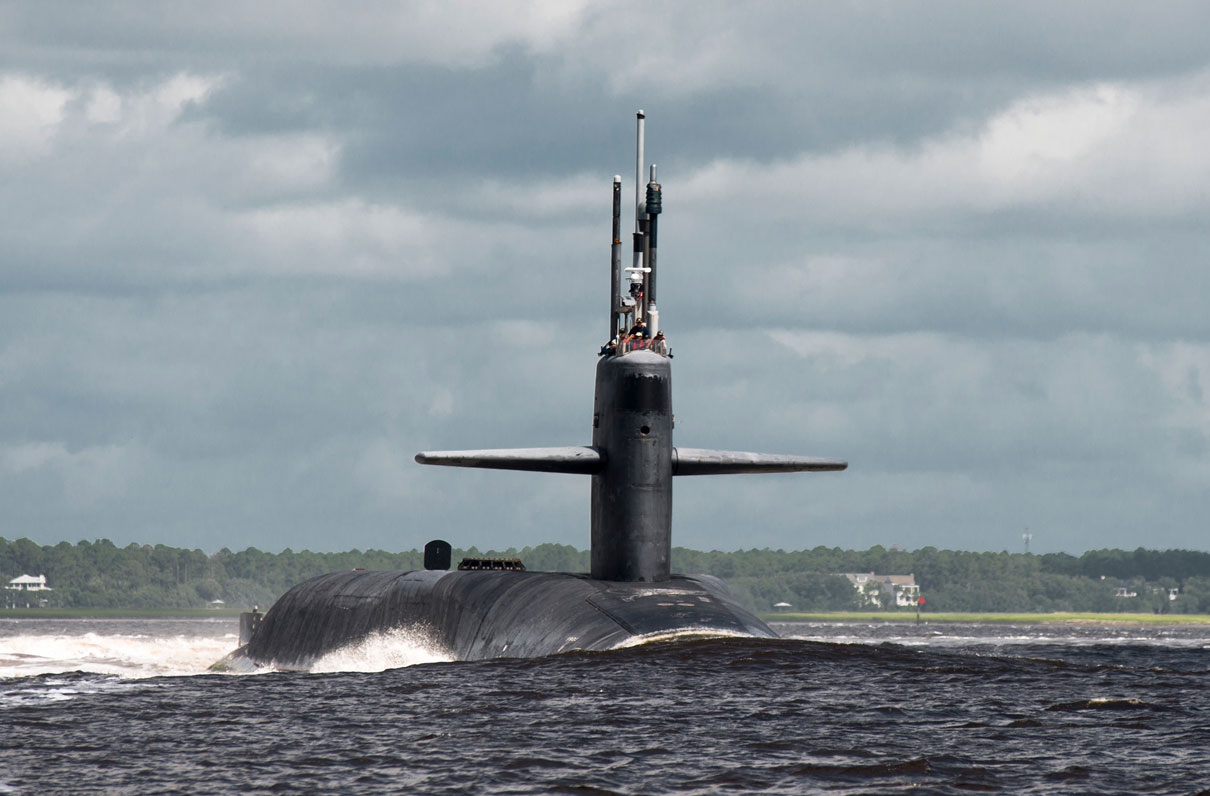[Editor's note:The following is a commentary by Roshni Parikh, a Junior at Harriton High in Rosemont, Penn., and an intern at the Kaplan Public Service Foundation. The foundation provides citizen leaders opportunities to become more involved with members of the US Military and their missions in an effort to bridge a widening gap between the civilian and military communities]
Since the Presidential election of 2016, Americans have been bombarded by around-the-clock news coverage and conspiracy theories regarding Russia. As we let our government sort out fact from fiction, the United States Navy and its Submarine Force are on the frontlines combating the re-emergence of Russia's increasingly aggressive submarine force, which has been expanding its capabilities and operations throughout the last decade.
Russia has embraced a new State Armaments Procurement Program, which plans to expand the Russian fleet by approximately 18 new submarines before 2020, while simultaneously modernizing its current submarine technology. Russia has also expanded its geographic footprint by establishing bases in Tartus, Syria and Crimea, Ukraine, which function as repair and strategic planning locations for the Russians while also facilitating increased influence in these highly sensitive and important regions.
This reemergence of the Russian submarine force coincides with their President Vladimir Putin's desire to restore Russia to a global power through its projection of force; both kinetic and non-kinetic (including cyber and information operations campaigns). In order to support their ambitions, the Russian government has recently invested billions of dollars into new nuclear and diesel-powered attack submarines that are both quieter and much better armed than their cold war predecessors. In May of 2017 the new Russian attack submarine, the Krasnodar, patrolled off the coast of Syria after being pursued by several allied forces. This new diesel-electric submarine, like many others recently developed by the Russian military, boasts an echo-absorbing coating and advanced sound dampening machinery making the task of detection even more difficult for U.S. Anti-Submarine forces. Furthermore, Russia, through its armed support of the Syrian regime, has had the opportunity to demonstrate its submarines cruise missiles boasting a range of over 1,600 miles.
Russia's revamped silent service is now posing an increasing threat to the United States and its NATO partners. To combat this renewed challenge, the U.S. Navy has worked hard to remain the dominant force in the undersea world. Our Department of Defense has recognized the importance of maintaining undersea maritime superiority by building two Virginia class attack submarines per year since 2011. This commitment requires billions of dollars in funding from the U.S. government, but is necessary to offset the loss of American submarines as the older Los Angeles Class boats are retired at their maximum lifespan.
Despite this investment, the US submarine force will grow smaller at a time when current worldwide operational demands exceed their capacity. Our current American force has 52 submarines. The Navy has requested 66 submarines in order to effectively complete their required missions. This shortfall has led to shorter cycling times between deployments and longer deployment times for submariners. While this short fall has not resulted in decreased training, readiness or execution of missions by submariners, but rather has led to an over-burdening on the existing fleet which has the potential to raise conflict for the U.S. in the future.
The US Navy is now working on plans to build new boats that are more powerful, cost-effective, and have a longer lifespan than previous designs. Beginning in 2021, the United States will commence a replacement program for the current Ohio Class ballistic missile submarines. The plan is to build 12 new Columbia class submarines to replace the aging Ohio class fleet set to be decommissioned in 2027 yet will remain as part of the fleet for more than a decade later. These new submarines, known as “boomers”, contain a nuclear core no longer requiring refueling throughout their 42-year service life. The downside to this is that the estimated cost of the program, $347 billion will greatly curtail the Navy's shipbuilding budget for surface ships and other needed programs.
On Feb. 8, 2018, I traveled with the Kaplan Public Service Foundation to the U.S. submarine homeport in Groton, CT where we spent time on board the Los Angles Class attack submarine USS Toledo. As guests of Commander Philip Castellano and the United States Navy, we were able to learn about many of the ways in which submariners train during their time in Groton through experiencing firefighting, ship control operations, and damage control operations training. Not only were we able to learn about these different training methods from current naval instructors but we were also able to learn and understand more about the importance this training plays during submarine deployment and how this training aids submariners during combat. From this experience, any fears one might have about rising Russian aggression were put to rest as we witnessed the capabilities of the Toledo's submariners and the level of training and preparation they all receive in Groton.
The United States Navy and its submarine force are made up of extraordinarily brave and passionate men and women. These submariners work hard every day to keep the United States safe. However, in order to combat the renewed submarine aggression, growth and activity from the likes of Russia, our Congress must provide to the Navy the necessary funding to combat this threat. In addition, the U.S. sub force currently has dozens of submarines such as the USS Toledo which are ready and willing to take on any potential threats. Unfortunately, the existing number of submarines and those in America's development pipeline simply don't match the projected need in years to come. Adequate funding for both the Virginia and Columbia Class programs are imperative to our Nation's security.
